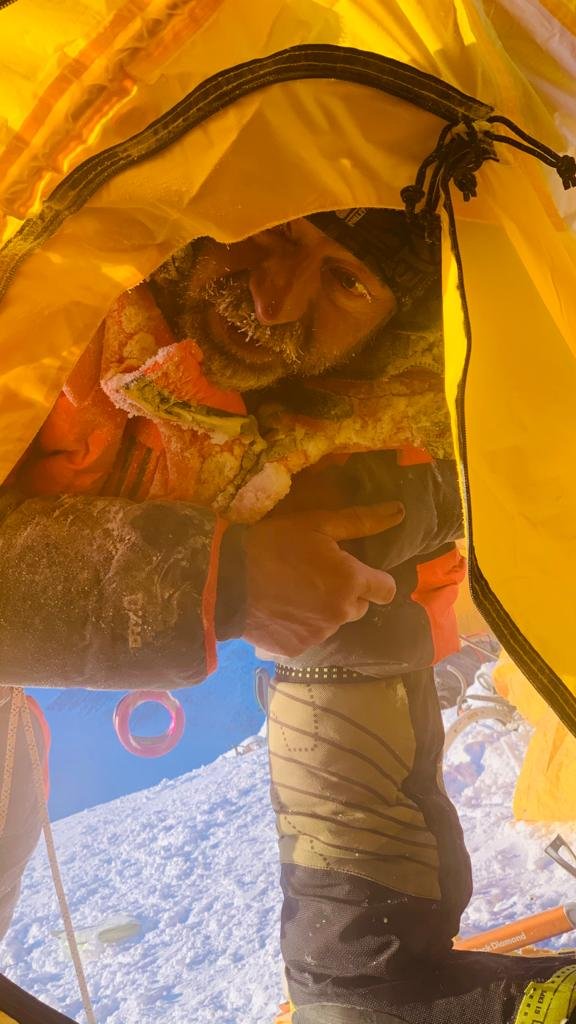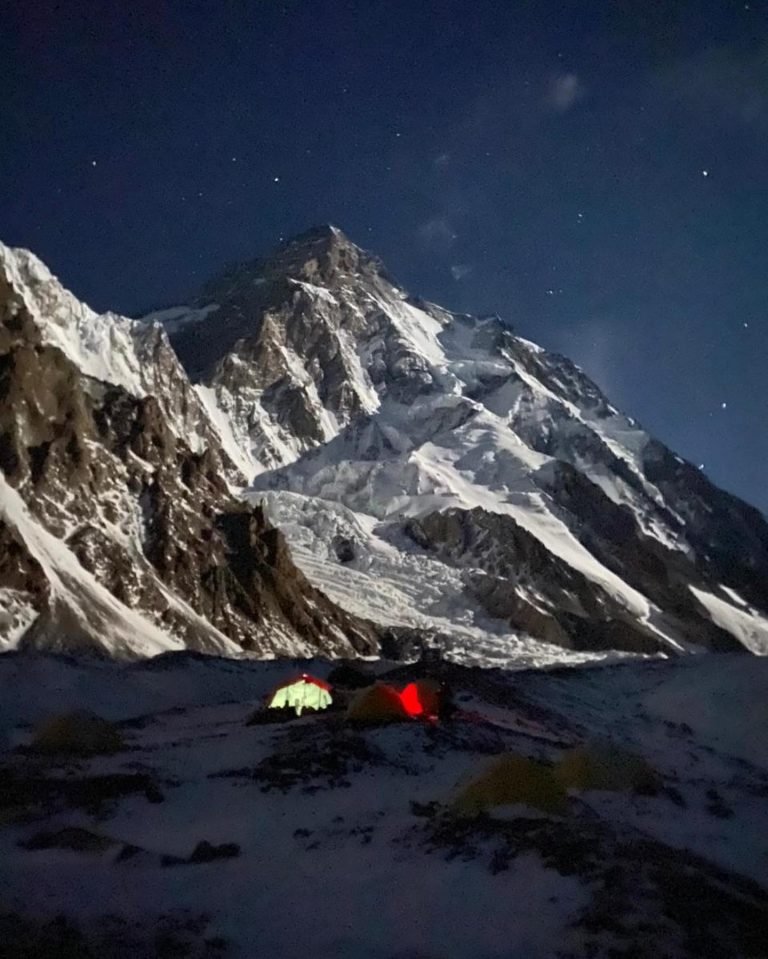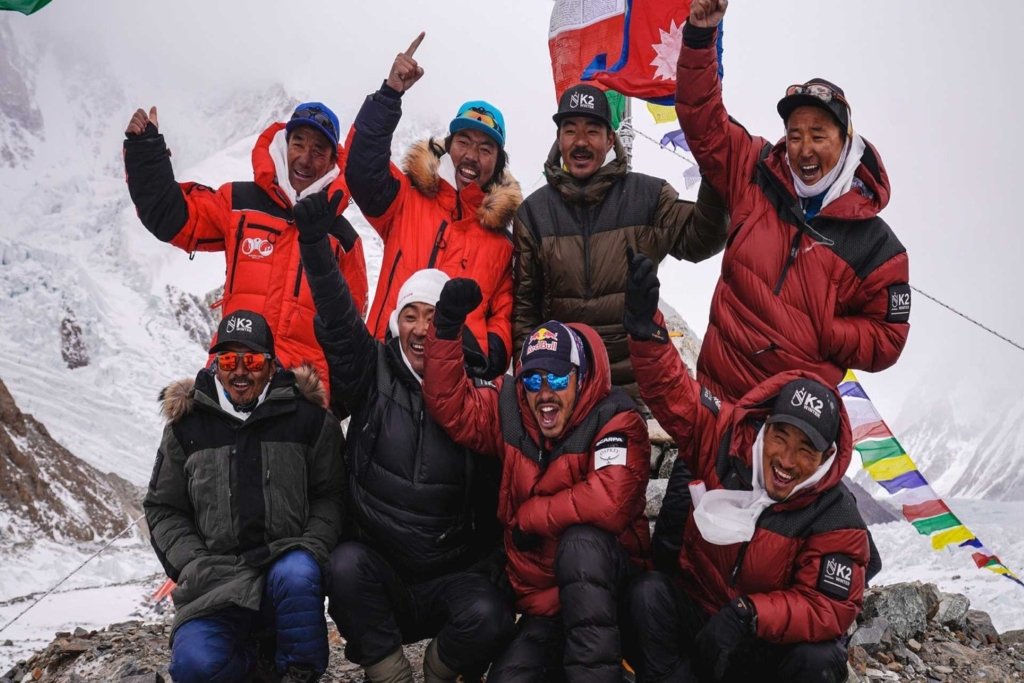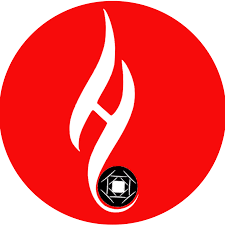Slovenian climber Tomaz Rotar shares his experiences and the chaotic unsuccessful bid to summit K2 in winter and the tragic incident of Ali Sadpara and companions
High Asia Herald Report

Slovenian climber Tomaz Rotar has given the firsthand account of the K2 winter expedition that claimed five lives including Muhammad Ali Sadpara, John Snorri and Juan Pablo Mohr on February 5.
In an in an exclusive interview to ExplorersWeb’s Angela Benavides, Tomaz has shared his experience on winter K2 expedition, strained relations with Nepali Sherpas and a lot more about the savage mountain.
He was the one who left Camp 3 on February 4 and reached an “impassable crevasse” that forced him back — and probably saved his life. Besides Sajid Sadpara, he was the last person to see John Snorri of Iceland, Juan Pablo Mohr of Chile and Ali Sadpara of Pakistan. And he suffered during the chaotic night in Camp 3 without a tent of his own. But that is only the last episode in a series of events that started two years ago.
“I have been tempted to let it all go and forget about everything,” the Slovenian climber told the ExplorersWeb, an online news portal of mountaineering.
“However, John Snorri saved my life twice. Telling the truth is the least I owe him in return,” said Rotar who was one of the few climbers in Base Camp this year, although not new to winter K2. The previous winter, he and John Snorri were clients of Mingma G’s expedition to the mountain.
Bitter memories from 2020

“After one-and-a-half months together last year, I can say that Mingma G is not a person I can trust. Our expedition was canceled unexpectedly because of Mingma G’s alleged illness. Snorri asked to remain and climb only with the Sherpas, but then one of them said that he had injured a leg. In fact, he limped when we were around but then ran around perfectly once back in Skardu.
“I could speak for hours about what happened, but the conclusion is that we paid 80,000 euros and got no refund at all when the expedition was aborted without our agreement. All the equipment and kerosene, etc. that we bought were left there. Some of it was used this winter for Mingma G’s own summit success.”
Snorri later shared this whole story on social media, and Rotar wrote an article. “But nothing happened,” he said.
One year later, both the former leader, Mingma G, and his clients returned to winter K2. Mingma and Snorri were leaders of their separate teams, while Rotar joined the Seven Summit Treks group.
“Mingma never said anything about the previous expedition. In fact, I never spoke to him. I said hello to him once as we crossed paths on the mountain, and that’s all.”
Snorri left out of the secret summit push

Rotar maintains Snorri was not told the truth when, in Camp 2 on January 14, he asked the Nepali climbers in Camp 3 if they were going to the summit, and they said no.
“Snorri told me that he had spoken to Mingma G on the mountain and that he had told him that they were not going for the summit, but just to check the tents at Camp 3.”
It was Sajid Sadpara who found out on the following day when he met Sergi Mingote. But by the time Sajid returned and told his father Ali Sadpara and Snorri, it was too late to join the push. Frustrated, they descended from Camp 2.
“I can’t help thinking that if John had joined the Nepalis, he may have summited that day and come back alive,” Rotar said.
Mingma G acknowledged to ExplorersWeb this week that the secrecy was a competitive move to give Nepalis the chance to scoop this coveted summit first. But Rotar says that the secrecy continued, despite Mingma G’s insistence that “Once we are done with the summit, it doesn’t matter to us who climbs later.”
Said Rotar: “When they returned from the summit, there was no information. No one shared pictures or information about the climb.”
“The first summit pictures we saw were those sent to us from home after the Nepalis posted them on social media,” Rotar continued. “We had no information about what lay ahead.” Notably, they heard nothing about the huge crevasse that eventually stopped him at around 8,000m.
The second push and Camp 3 chaos

After the Nepalis summited, high winds hit K2 for nearly two weeks. No one left Base Camp. Climbers didn’t do acclimatization rounds, and SST didn’t check or carry supplies to the camps. But in early February, the promise of a new weather window put everybody on the move.
“We had a meeting with Dawa and Arnold Coster (on February 1) to detail the summit plan,” said Rotar. “It consisted of going to Camp 1 on February 2, Camp 2 on February 3. Then on February 4, we were to proceed to Camp 3, rest, then continue to the summit with no Camp 4. We had to somehow manage to top out and return, hopefully back to Camp 2, as early as possible on February 5, because the winds would increase progressively that day. That required a very fast pace. I have climbed K2 in summer, so I know what that is.”
“As a result, Coster gave strict instructions about pace: Those who were unable to get to Camp 1 in six hours should turn back; they [wouldn’t be able to manage] K2’s upper slopes in such a short weather window.
“But several people ignored that instruction. If they hadn’t, there would have been fewer climbers in Camp 3, and fewer problems with the tents.
“In addition, we spoke about the Bottleneck and the route’s features, but there was no mention of any particular obstacle, such as the crevasse.”
Rotar also recalls “lots of problems with the O2 systems, with regulators exploding and the bottles’ pressure being too low. Stoves also malfunctioned, although the devices, and the mix of butane and propane, was supposed to work at -40ºC.” However, there was no shortage of O2, he says.
The longest day

On February 4, Tomaz Rotar was feeling strong and optimistic. He reached Camp 3 at around 3 pm on a beautiful day. Ahead of him was Colin O’Brady, who had sped ahead of his two Sherpas, and Juan Pablo Mohr, climbing at a really good pace, even without O2.
Shortly before C3, he caught up with Tamara Lunger, who said that she was too cold to continue and wanted to turn around. Rotar told this to Mohr as soon as he met him, and Mohr retraced his steps and tried in vain to convince Lunger to continue.
O’Brady’s Sherpas pitched a tent but wouldn’t let Rotar in. “Then I asked Juan Pablo [Mohr] for shelter, which he kindly agreed to. In the tent, I did my best to massage his feet, which were getting seriously cold. Eventually, however, Tamara showed up –- she had changed her mind. And she was JP’s partner, so I had to go out.
“Again, I asked to enter O’Brady’s tent but was denied entrance by the Sherpas. Luckily, the American ordered his Sherpas to let me in. ‘We cannot leave him outside to die,’ he said. When I entered, there were six other people inside. More climbers and their Sherpas had kept arriving in camp after dark. O’Brady also exchanged some bitter radio calls with Base Camp. I have to say I owe that guy my toes, if not my life.
“A similar situation was occurring in John [Snorri]’s tent, which he was supposed to share with Ali and Sajid, but ended up also sharing with three or four other people. In such circumstances, one cannot perform the basic chores to prepare for a summit push, such as changing socks, stretching legs, melting water to hydrate, and cooking.
Between Camp 3 and the crevasse

“Still, we went for the summit. I left the tent at around 9 pm, and I was later than other members in my team, but faster: As I went, I passed Bernhard Lippert and Josette Valloton, with their Sherpas. Bernhard was too cold, and Josette said her regulator was not working. As for me, the Sherpa assigned to me, Pasang, said he was afraid he was suffering from frostbite and was not able to go further than Camp 3. But Noel Hanna’s feet were too cold and he decided to stay in Camp 3, so I made a deal with his Sherpa, Temba, who would go with me.
“Eventually, we were at the head of the troop…until we reached that huge crevasse near 8,000m. In the night, we saw no way to pass it. Some 150 meters to the right, we saw a rope across it, but the rope was definitely not safe; it was not even tense. I looked for a ladder, but there was none. I waited for some time, looking for a passage in vain. Temba then had problems with his O2 system. He tried to fix it but was unsuccessful and said he had to turn around. Some minutes later, not having found a passage, I followed him down.
“Soon I passed John Snorri, looking tired and going slow, but determined. I explained the situation, told him that there was no way to cross it, but he insisted: ‘I will try to cross it.’ Then I said to myself, what the heck, and turned around and went after him, back to the crevasse. I took him to the point where the rope was, and again, I saw no way to cross it. I said: ‘I can’t jump across it, I have to go down, good luck.’ I left him there, waiting for his mates. It was the last time I saw him.

“As I proceeded down, I met Ali Sadpara and sometime later, Juan Pablo [Mohr], without O2. And much later, Sajid [Sadpara]. Sajid was wearing no O2 mask at the time, but he told me that he was having problems with his regulator. He asked to borrow mine since I was on my way down, but I had to refuse since I still needed the oxygen.
“I reached C3 and entered a tent where there were two Sherpas: Lakpa Dendi, climbing with Skatov, and Pasang. They gave me some tea and left toward BC. I took a rest, but then forced myself to continue back down. On the way, I met Antonios, who told me about Skatov’s accident. Shocked, I kept going down. I really do not recall every moment, I was so tired. I made it back to Base Camp in the night. I remember I sat down at the table in the dining tent and passed out right there. Someone took me back to my tent because I woke up in the morning in full summit clothes and boots but somehow inside a sleeping bag.
“Then it was the long wait, and the search, and the lack of news. Coster and Dawa were worried sick because they could not contact the summit group on the radio. Dawa also apologized for the problems that occurred at Camp 3. Otherwise, he paced BC, glued to the radio, calling insistently and looking up the mountain.
Conclusions

“The lack of tents was a serious problem, as was the malfunction of O2 systems and stoves. During the night in Camp 3, we used all the available O2, as far as I know. And yet, if you asked me if I would climb with Seven Summit Treks again, I would say yes. I climbed Kangchenjunga with them, and my experience was good.
“As for the ropes, there was as usual on K2 a mix of old and new ropes, and the rope-fixing team used sometimes new other times old ropes. On my own summit attempt, I didn’t see any ropes about to break. Of course, you take precautions such as clipping to more than one rope and also try to distribute your weight not only on the rope but also on your crampons.
“Back in 2018 [on K2], after I had a fall when a rope snapped and I reported this back in Base Camp, Garrett Madison’s team refixed part of the route with excellent, bright orange Diamond rope. These ropes are still there and still strong –- they’re definitely better than the rigid but cheaper Korean ropes commonly used.
“What I fail to understand is lack of information about the proper route and its features. Since I returned, I have been reading everything that was published about the expedition, trying to figure out what went wrong –- but I still don’t get it.

“How did everyone on the Nepali team cross the crevasse? I have read Mingma and Sajid’s accounts, and the more I read, the less I understand. The ropes started, as Mingma said, 200 to 300m above Camp 3, but then he states that they fixed everything, including the crevasse that they somehow crossed.
“But the route we all followed on the second push ended at a real void. Sajid said there were no ropes where they jumped over it, but I can’t believe they just jumped that huge crevasse –- they must have found a different passage, although I really looked around and saw no option. It was dark, of course, but I still can’t solve the riddle.
“Maybe the Nepalis fixed two lines of ropes, the one leading to a dead end and the second that took them to the summit?”
“But then, Sajid said that they knew about that crevasse before heading for the summit, and yet they were following the same route I had. Finally, if the route was off the normal line and closer to the Cesen route, why weren’t we informed? During the briefing, there was no mention of two lines or ropes or any crevasse.
“As I said, it is the overall secrecy and lack of information we had before our own summit push that has me most confused. I am juggling theories and possibilities but beyond that, all I can I hope is that there’ll be a further investigation about the unclear aspects of this climb.”

The High Asia Herald is a member of High Asia Media Group — a window to High Asia and Central Asia
